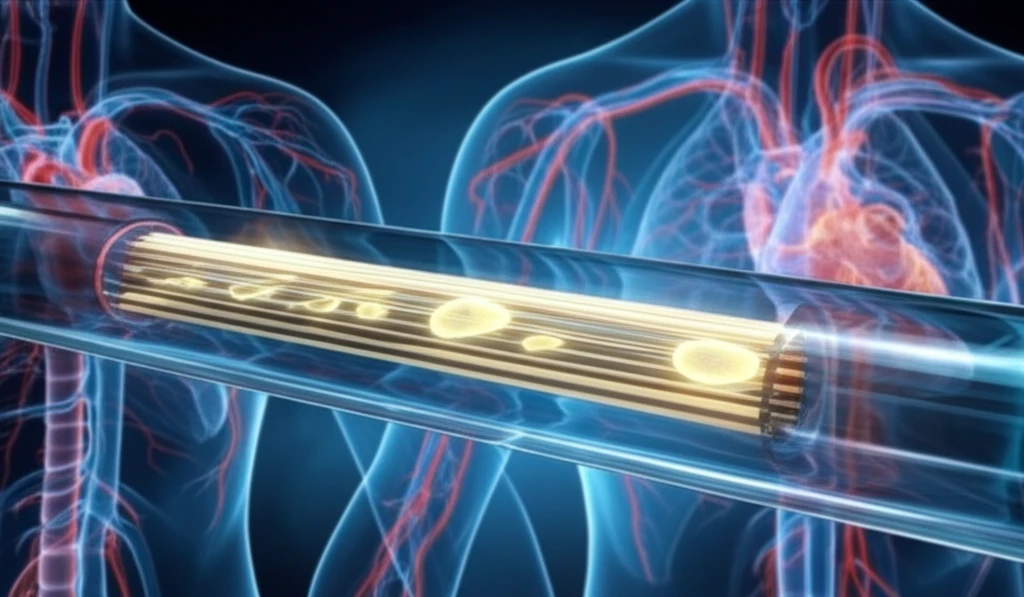
Vein-on-a-Chip: The Future of Cardiovascular Research is Here
"Researchers develop a simple microfluidic device that mimics a blood vessel, offering a cost-effective and efficient platform for cell culture, drug testing, and vascular studies."
In multicellular organisms, cells are organized three-dimensionally (3D) into cooperative assemblies, forming tissues and organs. Within this microenvironment, cells experience dynamic variations like chemical gradients and mechanical forces, which are crucial for their growth, survival, and function. Understanding how cells and tissues interact is critical for investigating human pathology.
Traditional cell cultures are essential in cell biology, biochemistry, and drug discovery. However, two-dimensional (2D) monolayer cell cultures and animal models often fail to accurately replicate the complex structure, function, and physiology of living tissues. This limitation has spurred the development of new in vitro models that better mimic organ functionality, with microsystems engineering playing a crucial role.
Microfabrication techniques enable the creation of microchips that allow precise control over cell position, function, and tissue organization. When combined with microfluidic technology, these microchips provide dynamic control over fluid flow and pressure, creating a microenvironment that closely mimics physiological conditions. This has led to the development of organs-on-chips, which are devices that allow the study of biological processes in vitro that were previously impossible to observe.
What is the Vein-on-a-Chip and How Does It Work?

Researchers have successfully created a microfluidic device that mimics a blood vessel using an inexpensive and straightforward method. This "vein-on-a-chip" serves as a starting point for cell culture under perfusion, cardiovascular research, and toxicological studies.
- Polyester-Toner Microfluidic Device: An inexpensive and easy-to-produce microfluidic device that mimics a blood vessel.
- Material Safety: Made of polyester and toner (PT), confirmed not to induce cell death or nitric oxide (NO) production.
- Surface Treatment: Applying oxygen plasma and fibronectin improves endothelial cell adhesion and proliferation along the microchannel.
- VEGF-A Increase: Treatments increase vascular endothelial growth factor (VEGF-A) concentration profiles, promoting endothelialization for neovascularization.
The Future of Vein-on-a-Chip Technology
The development of this vein-on-a-chip technology marks a significant step forward in cardiovascular research. Its simplicity, cost-effectiveness, and ability to mimic blood vessel conditions make it an invaluable tool for cell culture, drug testing, and understanding vascular diseases. As research continues, this technology promises to accelerate discoveries and improve treatments for a wide range of conditions.
